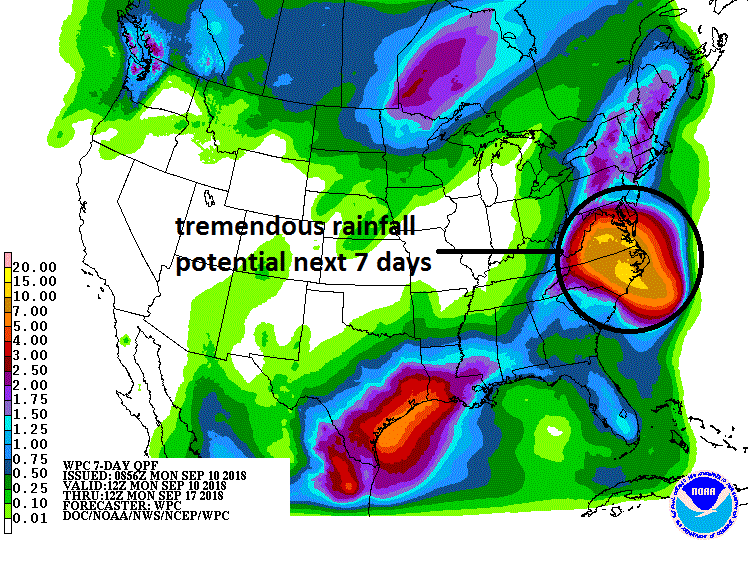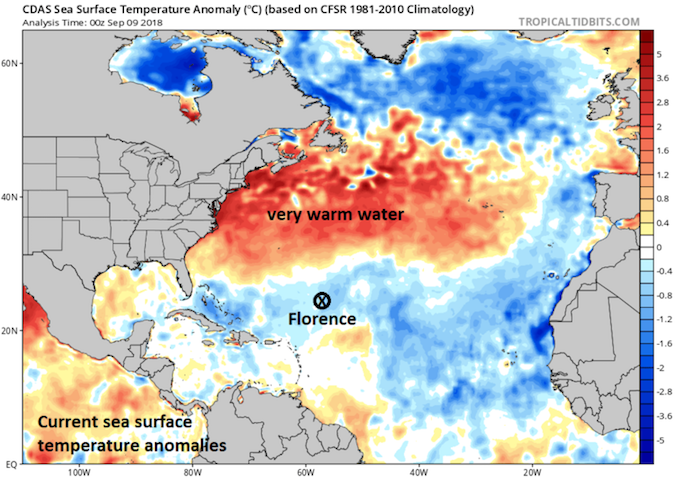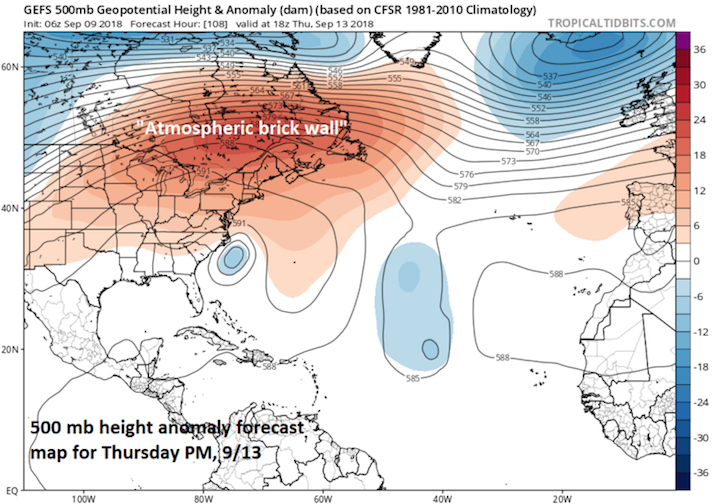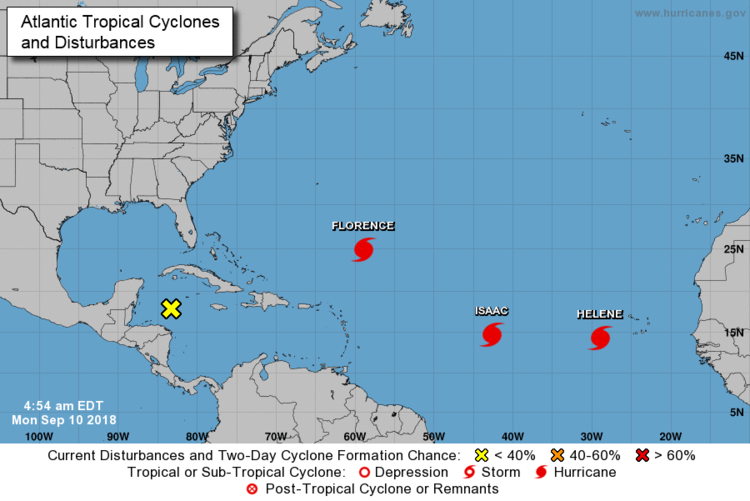
Overview
All eyes are focused on Hurricane Florence as we begin the new week and chances for a major impact on the US east coast continue to grow. Florence is now churning slowly towards the US east coast as a category 2 hurricane and may make a landfall late Thursday or early Friday somewhere along the Carolina coastline - likely with "major" hurricane status. Very strong high pressure ridging is now building at upper levels of the atmosphere across southeastern Canada and the northwestern Atlantic and this will be a key player in the push of Florence towards the east coast over the next few days. In addition, this very strong high pressure ridge will eventually act as an "atmospheric brick wall" for Florence once it reaches the east coast and the brakes will be put on any attempt at a northward advance by the storm. This eventual slow down in the northward advance of Florence will allow for an extended period of heavy rainfall and the result could be tremendous rainfall amounts in the Carolinas and much of the Mid-Atlantic region.
Florence
Florence regained hurricane strength on Sunday and is very likely to reach "major" hurricane status within 12-24 hours. The latest readings on Hurricane Florence are as follows: max sustained winds at 105 mph, central pressure at 969 mb and its movement is to the west-northwest at 9 mph. An upper-level trough of low pressure pushed across the north Atlantic this weekend and "left behind" Hurricane Florence which is now under the increasing influence of a strong upper-level ridge expanding to the north across southeastern Canada and the northwestern Atlantic. This ridge will help allow for the movement of Florence to continue to the west over the next couple of days and towards the Carolina coast line.


Isaac, Helene
Two other hurricanes are in the Atlantic Basin and will need to be monitored in coming days. The closest system is Hurricane Isaac (category 1) and it will take a "southern" track and head to the Caribbean Sea - perhaps reaching there by Thursday. Meanwhile, Hurricane Helene (category 1) is expected to curve to the north in coming days and out into the open Atlantic - likely never coming close to the US. According to Philip Klotzbach (Colorado State University), this is the 11th year on record that the Atlantic Ocean has had 3+ hurricanes simultaneously. Other years were 1893, 1926, 1950, 1961, 1967, 1980, 1995, 1998, 2010, and 2017.





Comment: Hurricane Florence strengthening as it heads toward US East Coast